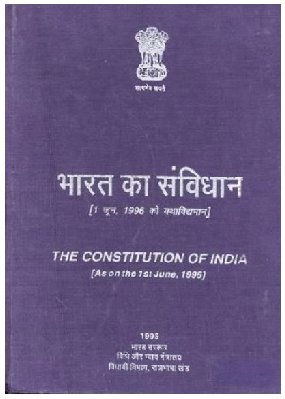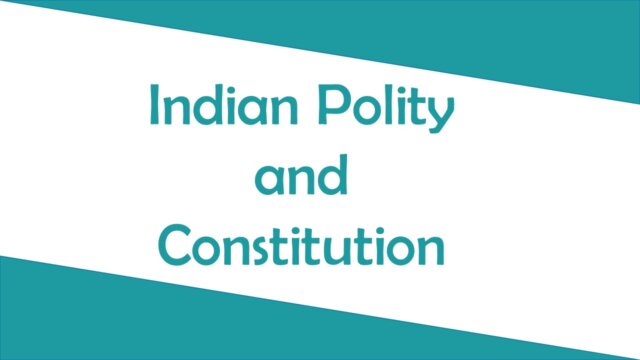Essay on Indian Polity and Constitution: The President of India is the head of state of the Republic of India. It is decided upon every five years. The Constitution is written with measures that ensure everyone has access to justice. Caste, religion, or gender are not grounds for discrimination against anyone. Social inequality is severely forbidden on the basis of gender, caste, and religion. The government’s main goal should be the welfare of all citizens; but, it also needs to pay extra attention, especially to the less fortunate groups in society.
Historical Background
Eight other Congress officials, including Motilal Nehru, authored the Indian constitution in 1928. During its Karachi session in 1931, the Indian National Congress passed a resolution outlining the proposed format for the independent India’s constitution. The right to freedom and equality, the right to adult suffrage everywhere, and the right to minority rights protection are all incorporated in these two documents. Subsequently, these publications’ contents included background information on a set of fundamental principles that were subsequently embraced by all political figures and incorporated into the Indian constitution.
Due to the fact that only a small elite group was granted the right to vote during British rule, India’s legislatures were feeble. In 1937, elections were conducted for Provincial Legislatures, which were not entirely democratic administrations, throughout British India. Nonetheless, Indians gained valuable experience from working with these legislative institutions, which aided in the establishment of indigenous institutions in India after independence. Similar to South Africa, India’s Constitution was drafted in extremely challenging conditions.The Government of India Act of 1935 served as the model for the basic framework that the authors of the Indian Constitution used.
The Constituent Assembly
The chosen representatives of the Indian people were gathered in the Constituent Assembly.The Constituent Assembly met for the first time in December 1946 after elections were held in July of that same year.The Constituent Assembly was split into the Constituent Assembly of India and the Constituent Assembly of Pakistan upon Partition. There were 299 members of the Indian Constituent Assembly, which wrote the country’s constitution. The Indian Constitution was enacted by the Constituent Assembly on November 26, 1949, but it wasn’t until January 26, 1950, that it became operative.
Factors of Constitution Formation
The French Revolution, British Parliamentary democracy, the US Bill of Rights, and the Russian Socialist Revolution all influenced the creation of the Indian Constitution.
Important Aspects of the Indian Constitution
The salient characteristics of the Indian Constitution are as follows:
The Indian Constitution has been “written.”
The Indian Constitution is both “rigid” and “flexible,” meaning that certain parts of its “basic structure” cannot be changed.
The Indian Constitution is “Federal” in that power is shared between the Center and the States, but it is also “Unitary” in that the Center has more authority.
GK Question and Answer click here

Role of Constitution
The French Revolution, British Parliamentary democracy, the US Bill of Rights, and the Russian Socialist Revolution all influenced the creation of the Indian Constitution.
Important Aspects of the Indian Constitution
The salient characteristics of the Indian Constitution are as follows:
The Indian Constitution has been “written.”
The Indian Constitution is both “rigid” and “flexible,” meaning that certain parts of its “basic structure” cannot be changed.
The Indian Constitution is “Federal” in that power is shared between the Center and the States, but it is also “Unitary” in that the Center has more authority.
Each democratic country has its own constitution. However, a complete constitution is not necessary for a country to be able to conduct true democracy.
The Americans drafted their own constitution after winning the War of Independence from Great Britain in 1787.
In contrast, the French people twice ratified democratic constitutions after the Revolution: in 1791 and 1958. Since then, it has become the norm for all democracies to have a written constitution.
Constitutions are extensive codifications of laws that establish a number of basic ideas.
the power of legally elected governments to take action;
limitations on what isn’t possible to accomplish;
fundamental rights of citizens; and
How leaders of the future will be chosen.
You may like this:


[…] On Indian Polity and Constitution with PDF : A vast range of subjects are covered under the discipline of Indian politics, including […]